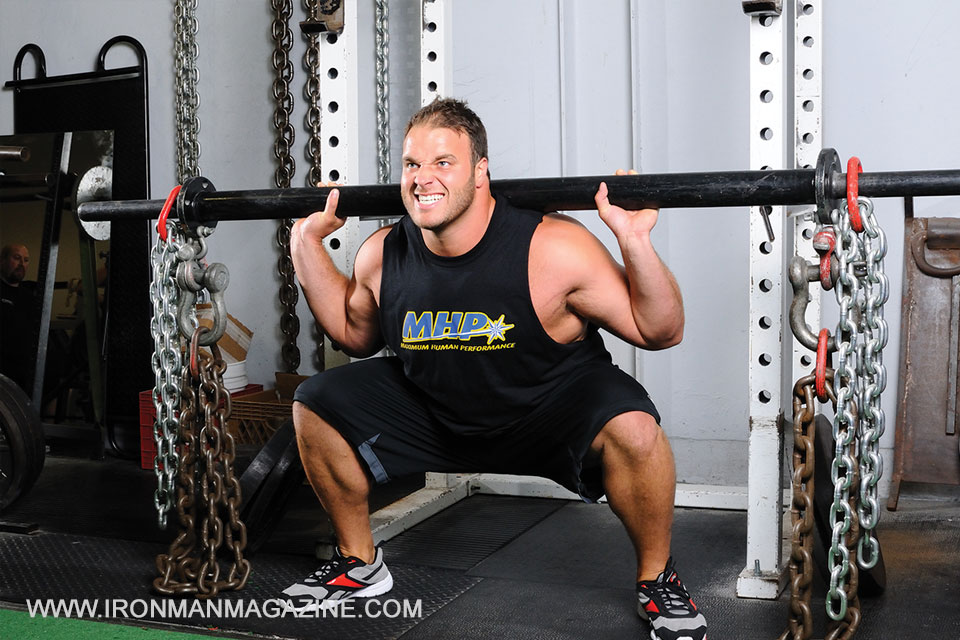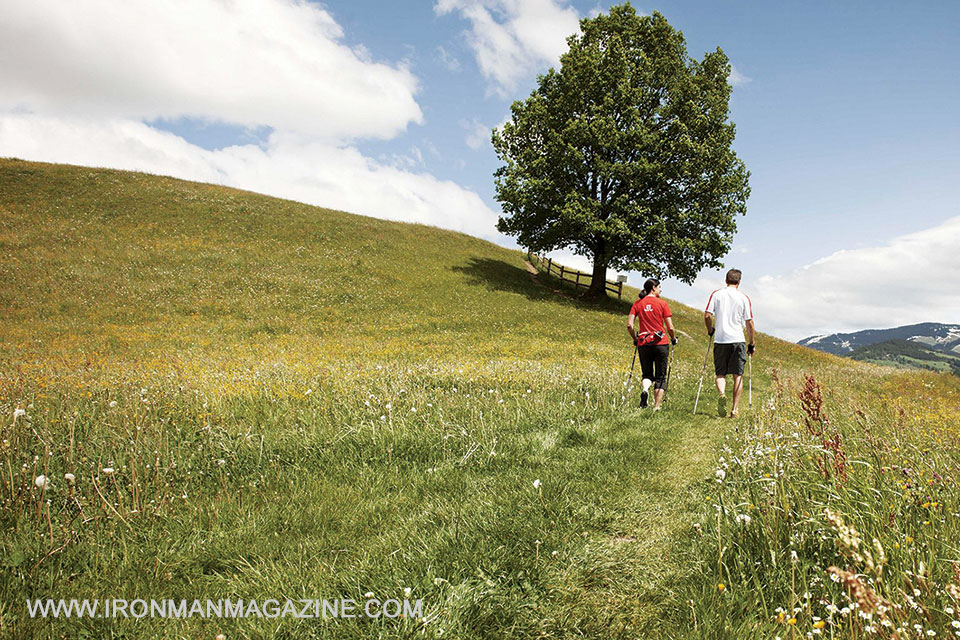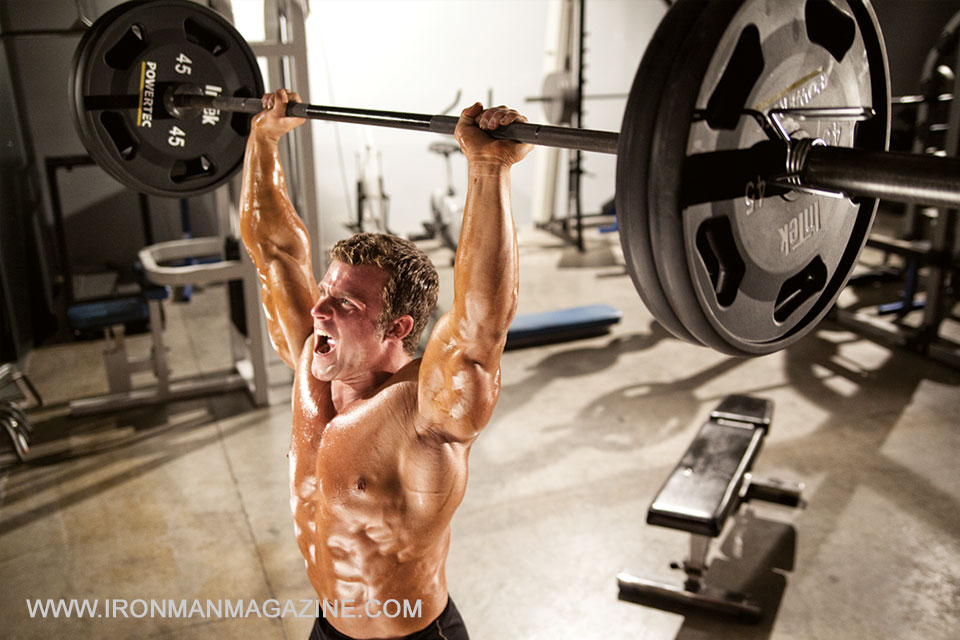


Muscles grow and become stronger when they’re pushing against some type of resistance. That’s not groundbreaking news by any means, but it does suggest that you can safely ditch the barbells and dumbbells when your mind—and body—need a break and still get a workout that will result in significant performance and strength gains.
I wouldn’t ask you to leave your routine behind and never go back, but taking a chance on high-intensity bodyweight training—with the addition of dynamic resistance provided by chains—can be a great way to build muscle. Not only is it effective for muscle growth, but it also gives your joints a break from traditional weightlifting. In addition, your joints get to go through their natural ranges of motions without limitations, thereby decreasing your chance of injury and increasing your athleticism.
When people say bodyweight training isn’t as effective as traditional weightlifting, I ask them one question: Have you ever seen the body of a gymnast? Enough said! While I do agree that basic bodyweight training can seem too easy to build mounds of muscle, simply incorporating more advanced protocols to increase the tension placed on your muscles will provide plenty of progressive resistance. Follow such a program for a set period, and you can bet that added strength and size will result.
One other side effect to consider is body composition. Simply put, if you add strength and muscle to your body, you will be able to perform more repetitions on a given bodyweight exercise. In addition, if you reduce the amount of bodyfat you carry, your repetition performance will also improve—plus you’ll look better! As a result, this type of exercise program is an excellent way to track your changes and improvements in body composition.
In order to provide the tension needed to build muscle faster with this type of training, I recommended adding chains to already effective bodyweight exercises. Chains are easy to take off and put on as needed, which gives you easier transition between exercises. They’re also a cheap man’s version of a weighted vest. A vest may be a bit more versatile, since it attaches and molds to your body, but a heavy chain can provide a comparable effect.
Most online fitness retailers sell lifting chains, so they are very simple to purchase, but don’t just buy one chain. As with traditional weight training, the more resistance you provide, the more muscle growth you’ll trigger. So buy chains of several different weights to accommodate your current fitness level and as a way to track your improvements.
Bodyweight training often gets a bad rap for not being the optimal method of producing thick, strong muscle; however, I can assure you that the circuit described below—as well as other advanced bodyweight-training techniques—will enable you to continue building muscle and hitting new performance gains that will take your training to a different level. True lifters should take into account every possible way to build muscle and shed fat, and this workout is guaranteed to get you there.
This circuit is a great way to add high-intensity bodyweight training to your program.
Chain dips. Throw a chain around your neck, and perform regular dips on two parallel bars. If you want to place more stress on your chest, lean forward more and let your elbows flare out away from your body as you descend. If you want to place more stress on your triceps, keep your chest more upright and your arms close to your body on the way down. Again, add more than one chain if your strength permits it.
I prefer performing upper-body training by staying between eight and 15 reps for maximum muscle growth. That rep scheme ensures that you’re getting the tension needed to stimulate gains. So you should add a resistance that allows you to train in that rep range.
Chain squats. You should be able to train your legs with more chains, as they are a larger muscle group. The difference between upper-body and lower-body bodyweight training is that lower-body work will require more reps to stimulate muscle growth. I recommend using the 15-to-20 range—as I said, adding more chains to keep your muscles working hard. You can also shorten your rest periods to exaggerate the training effect.
If you’re one of those people who had big, strong legs to begin with, you can also use chains as a means of resistance on one of the fat squat bars. Here you have the weight of the bar (they can range from 55 to 100 pounds) plus the added weight of heavy chains. In addition, with longer chains the resistance decreases as you lower into the squat, with the chains touching the floor, and increases as you stand up, lifting them off the floor.
Chain pushups. When going from the squats to pushups, you will probably have to take a chain off. Immediately hit the ground and start performing pushups. Make sure to keep your abs tight and your glutes engaged to prevent your stomach from caving in. As with the dips, stay within the limits of eight to 15 reps. To maximize your balance and add more stimulation to your muscles, try elevating your feet or balancing on kettlebells—or both!
Chain pullups. When you add chains to the mix on pullups, it helps to prevent you from “kipping” or otherwise swinging or using momentum to finish the exercise. Kipping pullups have found their way into gyms because the momentum enables you to do high repetitions. A word of caution, however: I’ve tried doing kipping pullups with a chain dangling around my neck, and I almost had to go home and tell my girlfriend that I wouldn’t be able to have kids! The swinging chain is dangerous!
You can perform this movement with an overhand or parallel grip—palms facing each another, hands spread at shoulder width. Since we’re adhering to eight to 15 reps for upper body, there’s no kipping allowed during this circuit. Perform strict pullups to emphasize total-body strength and force your muscles to work the way they should.
Chain box jumps. The last exercise in this circuit is box jumps. With chains wrapped around your neck and shoulders, you must be careful not to hit yourself in the face or groin as you jump (see kipping pullups, above!); however, the cool thing about using chains here is that you can greatly enhance the resistance as you push yourself to repeatedly jump as high as possible. That increases explosive leg power. In addition, jumping back down to the floor and landing “soft” will provide a tremendous eccentric contraction for the thighs, which builds muscle faster (but also makes you quite sore!). Perform eight to 12 jumps, resting between them only long enough to reset yourself quickly.
Here’s the workout:
5 rounds
Chain dips, 8-15 reps
Chain squats, 15-20 reps
Chain pushups, 8-15 reps
Chain pullups, 8-15 reps
Chain box jumps, 8-12 reps
Take no rest between exercises. Since you are alternating upper- and lower-body work, your upper body can recover while you work legs, and vice versa.
Take a 60-to-90-second rest to recover after the box jumps. That will give your muscles enough time to recover but still keeping your heart rate elevated to ensure the metabolic effect. Then repeat the circuit.
Editor’s note: Cornell Hunt, C.S.C.S., is MHP’s Xtreme Training expert. He’s a certified strength and conditioning coach based in New Jersey. For more information visit MHPStrong.com. IM


















You must be logged in to post a comment Login